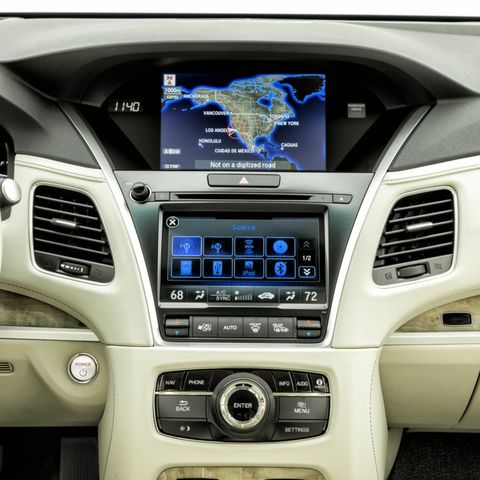In car infotainment systems more dangerous than cannabis or alcohol
An IAM survey has found that car infotainment systems can be as detrimental to a driver’s reaction times as alcohol and even cannabis are

FOR a few years now, most cars have come with high-tech, flashy infotainment systems that can control everything from the stereo, air conditioning, and even seating position.
While the systems are a godsend for manufacturers, that see them as a quick and easy way to raise the profile of their product, a new study suggests that they could be far more dangerous than anyone would have guessed.
Among the results, IAM RoadSmart found that motorway stopping distances were increased by between four and five car lengths when the driver was using infotainment systems. The study also found that drivers took their eyes off the road for as long as 16 seconds while driving (equivalent to a distance of more than 500 metres at 70 mph), while using the touch-controlled systems – results that are even worse than texting at the wheel.
Neil Greig, policy and research director, at IAM RoadSmart, said: “Driver distraction is estimated to be a factor in around a third of all road collisions in Europe each year.
“While previous research indicates that Apple CarPlay and Android Auto perform better than more traditional buttons and controls, the results from this latest study raise some serious concerns about the development and use of the latest in-vehicle infotainment systems. Anything that distracts a driver’s eyes or mind from the road is bad news for road safety.
“We’re now calling on industry and government to openly test and approve such systems and develop consistent standards that genuinely help minimise driver distraction.”
In the study, drivers completed a series of three drives on the same simulated test route using Android Auto and Apple CarPlay. On the first run, drivers did not interact with the system. On subsequent runs, drivers interacted with the system using voice control only and then using touch control only.
Unsurprisingly it was drivers using the touchscreen that proved the more distracting of the two methods of interaction, although even using voice commands proved to be distracting at some level. The results show that drivers failed to maintain a constant distance to the vehicle in front, reacted more slowly to sudden occurrences on the road and deviated outside of their lane. More worrying than any of these stats is the finding that using the touchscreen system meant reaction times of drivers were slower than someone who had used cannabis, and five times worse than someone driving at the legal limit of alcohol consumption.
“Most participants in the study report they use touch rather than voice control in real-world driving. As the results clearly show, this is the most distracting, so if there is a need to use the systems while on the go, voice control is a far safer method.” Greig added.
The key findings from the report are:
- Controlling the vehicle’s position in the lane and speed suffered significantly when
- Participants failed to react to stimulus on the road ahead
- Reaction times were slower when selecting music through Spotify while using Android Auto and Apple CarPlay
- Drivers would take their eyes off the road for longer than 12 seconds
- Participants underestimated time spent looking away from the road, by as much as five seconds












